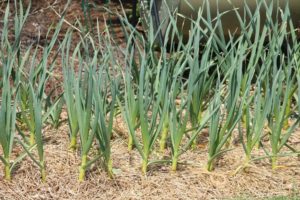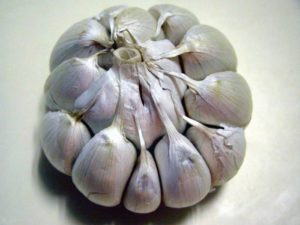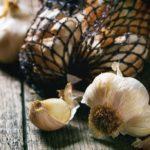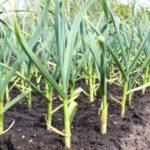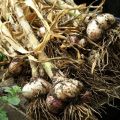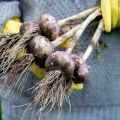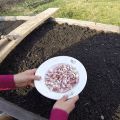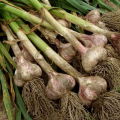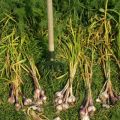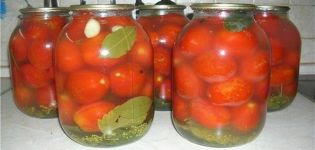When is it better and how to properly harvest garlic in 2020 and the top 7 storage methods
In order for vegetables grown on a personal plot to survive until spring and not lose their taste, you need to know how and when to harvest correctly. If the work is carried out correctly and on time, garlic, without which no second course is complete, will remain fresh until the first warm days. When to harvest garlic in 2020 depends on the climate of the growing region and the type of spicy vegetable.
Content
- 1 How to determine the maturity of garlic
- 2 The timing of harvesting crops, depending on the regions and climatic conditions
- 3 The subtleties of harvesting garlic according to the lunar calendar
- 4 Collecting a plant depending on the variety
- 5 How to dig up garlic correctly
- 6 Harvest preparation for long storage
- 7 Do I need to remove the arrows?
- 8 If the garlic is overripe, what to do?
- 9 Possible mistakes
How to determine the maturity of garlic
When determining the timing of the harvest of garlic, gardeners are guided by several signs. The most informative is the appearance. In order to find out whether a vegetable is fully ripe or not, it is necessary to dig several heads from the ground in different places.
Characteristic signs of ripeness:
- Fully formed teeth that separate easily from each other.
- At the base, the stalk of the garlic is hard and dry.
- Thin neck.
- The shell of the bulb is thin, but at the same time it firmly holds all the cloves.
- The garlic shell is dried and detaches without any problems, while making a rustling sound.
In the event that the time has not yet come to choose the garlic, the cloves are separated from each other with great difficulty, and the neck is very thick. In addition, the film covering the teeth does not come off even if you apply force. Such a vegetable is poorly stored in winter, and may not sprout when planted.
If the garlic is overripe, its teeth crumble right in the hands, and the shell cracks or rots. To harvest such a crop, you will have to sift the soil, selecting each clove separately.
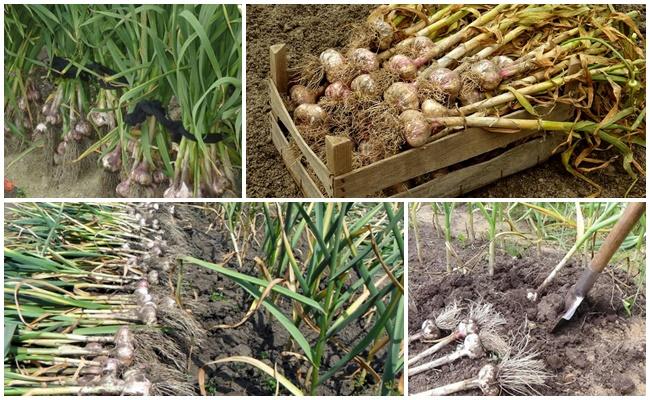
Winter and spring types of garlic are grown on the beds of domestic summer residents. Each variety has its own characteristic signs, indicating the ripeness of the vegetable:
- When harvesting winter garlic, the ripeness is determined by the arrows, paying attention to the air bulbs that form at their ends. In the event that there are already cracks on the shell, and the bulb itself is clearly visible, it is necessary to start digging out the crop.
- In the case of the summer variety, the leaves serve as a guide. In ripe garlic, they are still green in the center, and yellowed at the bottom.
The timing of harvesting crops, depending on the regions and climatic conditions
Since the climate is different in different areas, the harvest time is also different. Approximate ripening time for garlic by region:
- Southern regions - work is carried out from 10 to 20 July.
- Middle lane - they dig a vegetable in the last decade of July.
- Moscow suburbs - they begin to harvest in late July or early August.
- Leningrad Region - the collection is carried out in the first decade of August.
- Ural and Siberia - work will begin on August 20.
Harvesting times are approximate, since every year the weather is different and makes its own adjustments to the process of digging out the garlic.
The subtleties of harvesting garlic according to the lunar calendar
When determining the timing of harvesting, many gardeners are guided by the recommendations of the lunar calendar, where favorable and unfavorable dates are indicated.
In July
In the second summer month, residents of the southern regions and the middle zone start harvesting. For them, auspicious days in 2020 are July 23, 24, 25, 26, 27.
In August
Gardeners and farmers of the Moscow Region and the Leningrad Region, as well as some areas of the middle lane, begin harvesting in August. It is recommended to start work on the 19th, 20th, 21st, 22nd, 23rd, 24th and 25th.
In September
Farmers and summer residents of the northern regions start harvesting this vegetable in the first month of autumn. Suitable numbers according to the lunar calendar are considered - 8, 9, 16, 21, 25, 26.
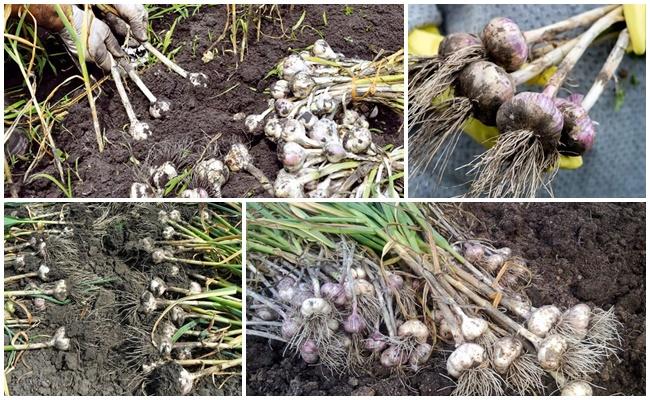
Collecting a plant depending on the variety
The timing and characteristics of harvesting a crop from a garden bed depend on its variety. Both winter and spring garlic are grown on the plots of domestic gardeners.
Winter
Garlic planted before winter begins to be harvested from the garden from mid to late July, depending on the climate of the growing region. But if early varieties are grown, then their ripening period does not exceed 3 months. Late varieties of winter vegetables are ready for digging in 4 months.
Therefore, in order to accurately determine the start date of work, add these figures to the date of disembarkation.
Another criterion that affects the start of work is the number of head fractions. As a rule, garlic, consisting of one large clove, ripens earlier than multi-fraction garlic. Next, plants with small teeth are ready to collect, and at the very end, specimens with large teeth.
Spring
This garlic is planted in spring. It is characterized by amicable ripening and long keeping quality, provided that it is harvested on time. An unripe vegetable loses its nutritional value, and an overexposed vegetable does not store well. The spring variety of garlic is harvested a little later than the winter one. This is because the vegetable needs time to take root after planting in spring. Garlic planted before winter manages to do this before the onset of cold weather.
How to dig up garlic correctly
Experienced summer residents prepare for the procedure for digging up garlic in advance, a month before the expected date, stopping irrigation of the beds with the plant. If it is necessary to slightly speed up the ripening process of the vegetable, a week before the start of work, they rake the earth from the heads, thereby giving access to the sun's rays and air.
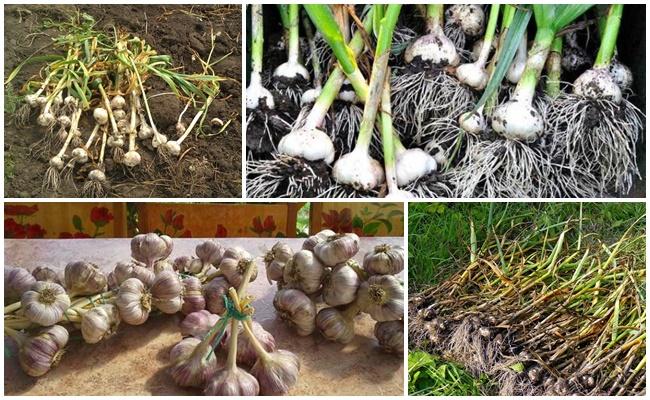
It is recommended to dig out the heads of garlic in dry and sunny weather, if harvesting during the rain, such specimens will be poorly stored and begin to rot before the New Year. The harvesting process is carried out according to the following algorithm:
- Disinfect garden tools - shovel or pitchfork.
- Gently dig in the garlic and take it out along with the stems and leaves. This is necessary so that the stems give the nutrients in them to the heads.
- The rest of the earth is shaken off and the crops are laid out in one layer under a canopy. It is important that the vegetable is not exposed to direct sunlight and rain.
- The roots of the culture are either shortened immediately, or they do it when it dries up a little (after 2-3 weeks).
- For drying, some gardeners tie the garlic in bunches and hang it under the roof of a shed or other utility room.
It is important to remember that the vegetable is brought into the room at night so that it is not saturated with moisture.
Harvest preparation for long storage
It is necessary to start preparing vegetables for long-term storage only after they are completely dry. Getting started, first of all, are determined by the place and terms of storage. The entire crop is sorted into 3 categories:
- for planting next season;
- for long-term storage;
- for consumption soon.
As a rule, the largest specimens with matured teeth are used for planting before winter. Small and damaged heads are set aside for cooking soon. If traces of mold or rot are seen on the garlic, it is thrown away; joint storage with healthy specimens will lead to infection of the entire crop.
The next step in preparation is pruning. The length of the roots depends on the purpose for which you plan to use the vegetable. If long-term storage is required, leave from 3 to 5 mm. In the case of an upcoming disembarkation, a root length of 5 to 10 mm is required. For trimming, use a sharpened knife or pruner. The main thing is not to damage the bottom of the bulb during the work, as this will lead to a reduction in the shelf life.

The stems are also cut, their length depends on the chosen storage method. If you plan to hang the garlic from the ceiling, leave longer stems. Slices are made either straight or oblique, this does not affect the storage duration.
After the end of the work, the garlic is sent to a cool room with good ventilation for another 2 weeks, and after that it is placed in storage.
Boxes
To store the crop, take wooden or plastic boxes. The heads are laid in them in a layer of no more than 15 cm and they are removed in a cool room, where there is no access to light. Recommended temperature - from 1 to 3 degrees Celsius, humidity should not exceed 65%.
Grids
The cut heads are folded into fine mesh and hung from the ceiling. They are also used for storing pillowcases, into which onion peels are poured to eliminate excess moisture.
In salt
If the humidity in the room exceeds the recommended limits, the method of storing the crop using salt is suitable. At the bottom of the container (box, box or glass jar) a layer of salt is poured 2 cm. Then garlic is placed, and all the voids are also covered with salt. The last layer is at the very top. This method helps to get rid of moisture and extend the shelf life of the crop.
Instead of salt, flour or wood ash is also used.
In paraffin
Paraffin is heated in a water bath to a liquid state and the heads are dipped in it. As soon as they dry, put them in a box or box and take them to the cellar.
In glassware
Banks are pre-sterilized and dried. Better to take 2 or 3 liter containers. A layer of flour is poured at the bottom and garlic is spread, along the way filling all the voids. Flour is again put on the very top and covered with a nylon lid. Store in a cellar or on a glazed loggia.
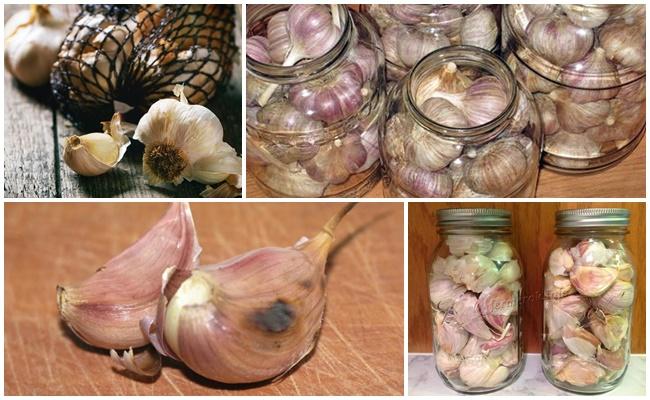
In the ground
Garlic is stored in the ground without loss of taste until spring. To do this, the crop is packed in plastic bags, wrapped on top with newspaper in 2 or 3 layers. They are buried in the ground to a depth of about 50 cm, and from above they are insulated with fallen leaves or spruce branches.
Weaving braids
For this method, dry stems are not cut at the preparation stage. They are woven together in a pigtail, the recommended amount in one braid is 15 pieces. For strengthening, use twine, at the end they make a loop, for which they are then attached to the ceiling.
Do I need to remove the arrows?
The arrows are formed only by winter garlic, if not removed, they will draw out all the nutrients from the heads.However, sometimes gardeners leave a few pieces in order to navigate when it is necessary to start harvesting. If a decision is made to cut off the arrows, they do this when they begin to twist into a spiral.
If the garlic is overripe, what to do?
If the vegetable is overripe and crumbled into cloves in the ground, sift the soil to extract them. Such garlic is not left for winter storage and is primarily used in cooking.
Possible mistakes
If a summer resident has recently started growing garlic, he makes mistakes:
- Overexposes plants in the ground.
- Harvested in wet weather.
- Puts spoiled copies for storage.
- Does not adhere to recommendations for storage conditions.
To make a stock of a fragrant vegetable for the whole winter and preserve the grown crop, it is necessary to study the recommended harvesting times for garlic and the requirements for its storage.



